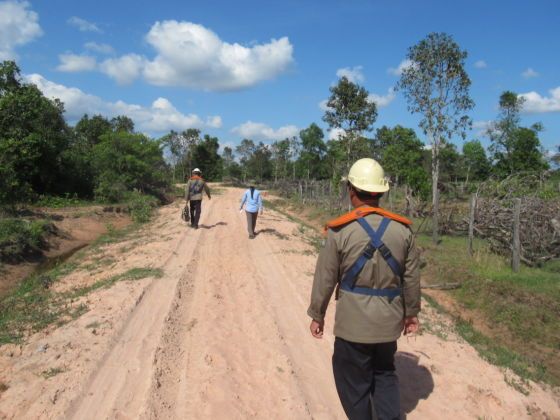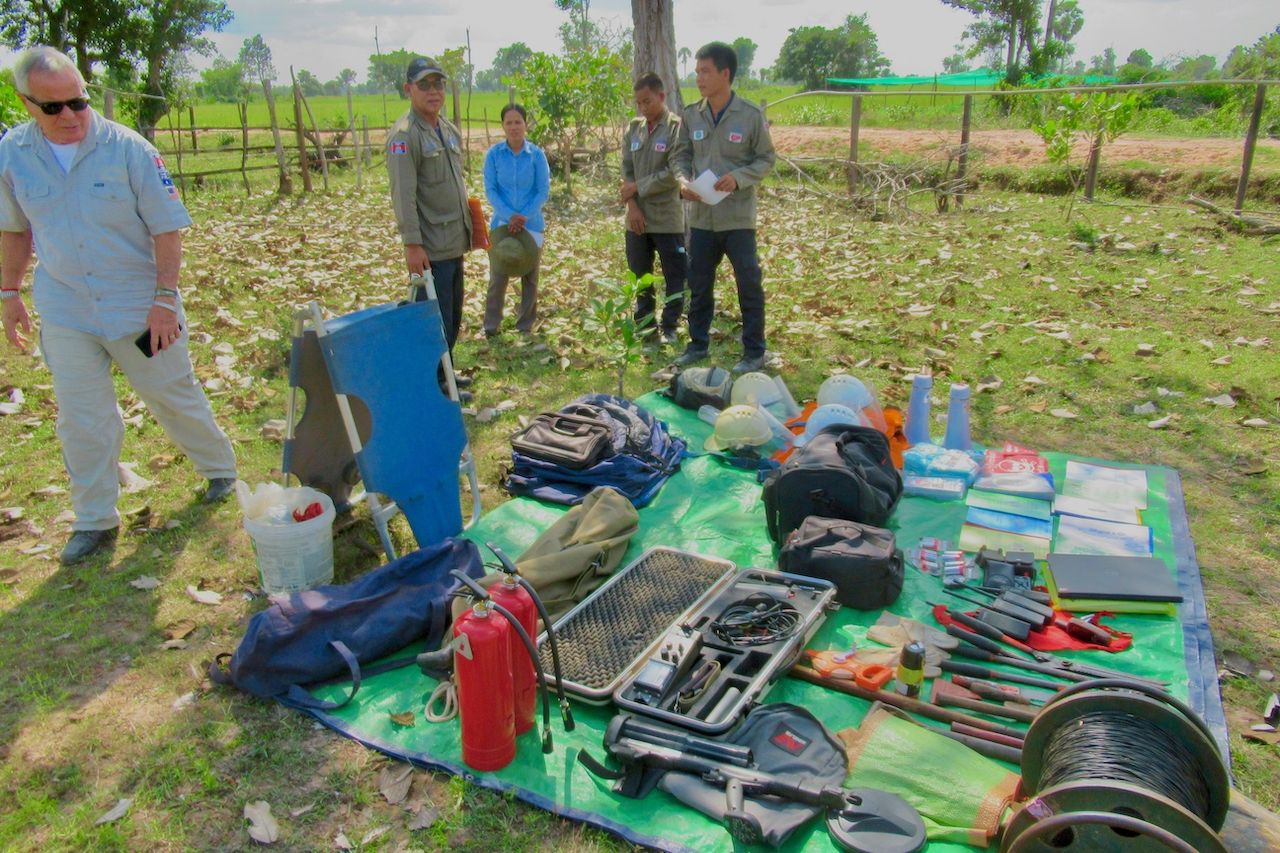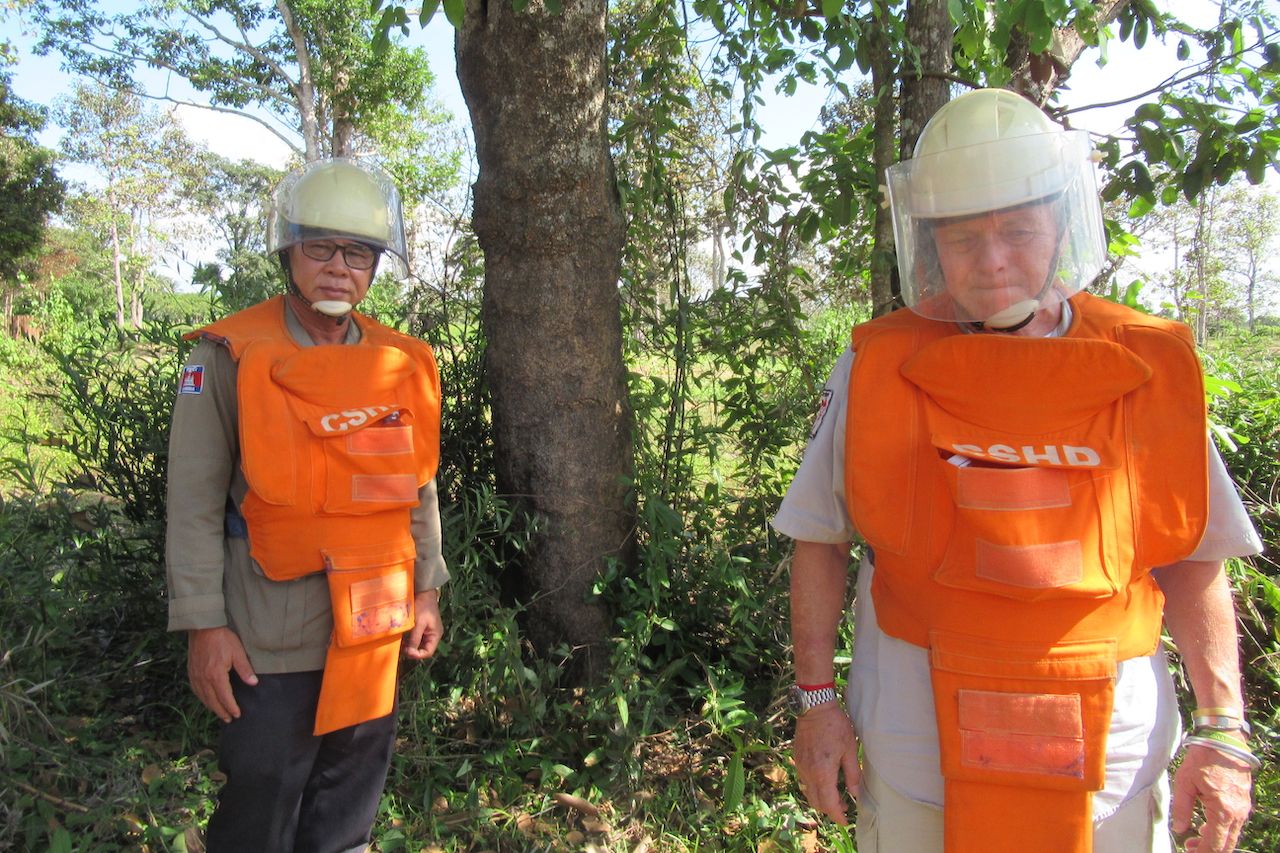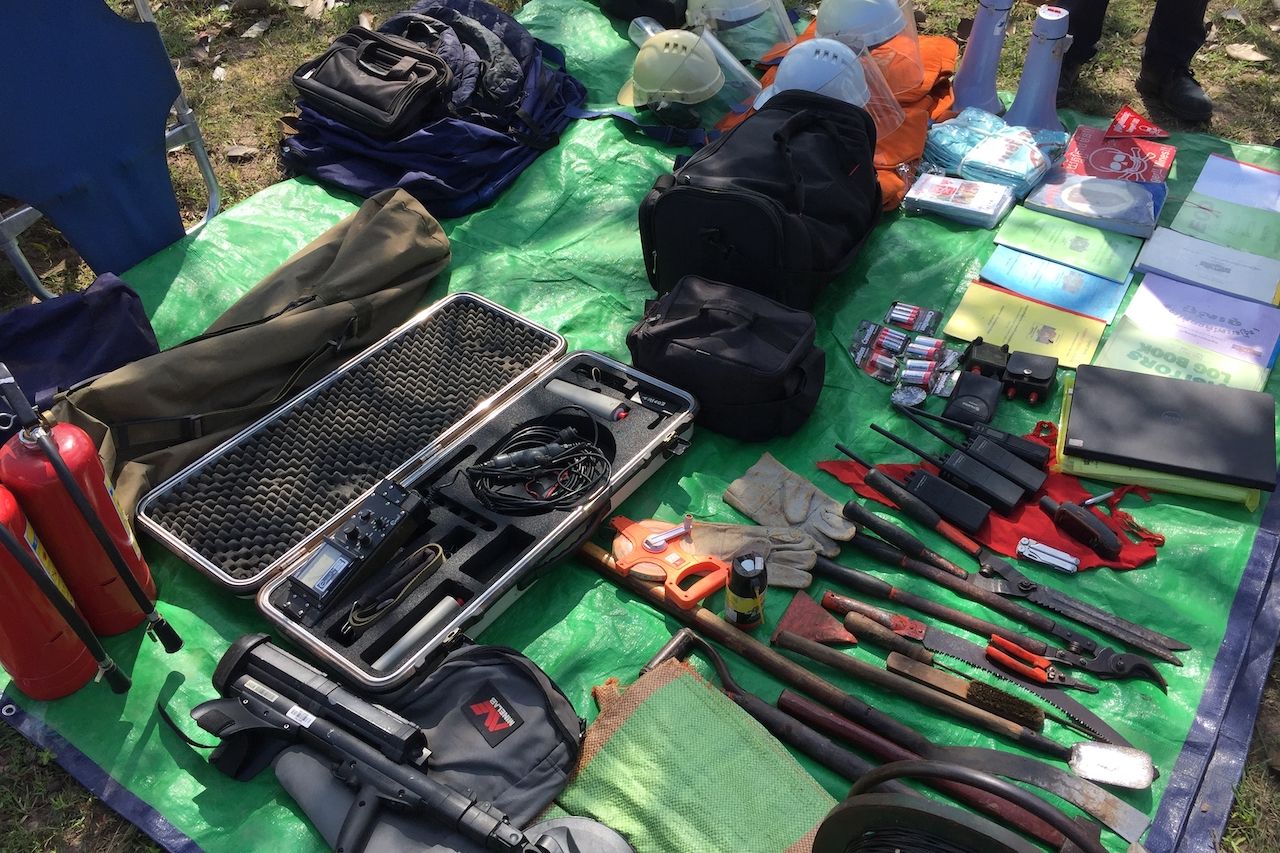Update: Since this story first published, an anti-tank mine killed three members of the Cambodia Self Help Demining team and injured a fourth. To contribute to the demining effort, visit the Landmine Relief Fund.
We are bounding down a hardpan dirt road an hour southeast of Siem Reap, Cambodia. I have to pee, my jaw hurts from the truck bouncing over the ruts, and we’re heading to a place that could get any one of us killed. I’m increasingly unsure I want to be here.







